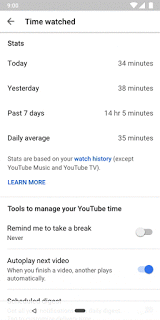Last year, Walmart acquired outdoor retailer Moosejaw for $51 million – a company that’s now one of several brands Walmart picked up during a speciality retail buying spree, along with ShoeBuy, Jet.com, Hayneedle, ModCloth, and Bonobos. Now, the company is making good on that purchase, as Moosejaw is the first of Walmart’s acquired brands to arrive on Walmart.com. The company will now curate its own storefront, in addition to operating its own separate site.
Since its acquisition, Moosejaw began to offer customers free, two-day shipping on orders over $49, and invested in technology improvements to its own site. It also enhanced its rewards program, and reported a 50% increase in redemption rates, as a result.
On Walmart.com, Moosejaw will now curate the new “Premium Outdoor Store,” which will offer Walmart online shoppers access to an assortment of outdoor speciality items that weren’t available on the site in the past.
This includes thousands of items from brands like Craghoppers, Deuter, First Ascent by Eddie Bauer, Gramicci, Jack Wolfskin, KLYMIT, LEKI, Stonewear and Tentsile. The store will also carry the full range of Moosejaw-branded clothing, jackets and gear. This premium assortment will complement the everyday camping assortment currently available on Walmart.com.
However, the store itself is not being branded as “Moosejaw” because Walmart plans to expand the assortment over time to pull in products from other speciality retailers and brands in the future. That means Moosejaw will fulfill much, but not all, of the orders placed in the new online shop.
In addition, the Walmart shop will launch with nearly 50 brands, while Moosejaw itself carries nearly 500 – that’s why it’s referred to as a more “curated” selection, in addition to the fact that non-Moosejaw products will join at a later point.
The online storefront will also feature Walmart.com’s new design, which offers a more modern and clean look-and-feel, and other personalization features.
In its quest to challenge Amazon, Walmart’s speciality retailer buying spree last year allowed it to bring in small, but tactically important brands targeting upscale shoppers and millennials.. But it was unclear if Walmart planned to allow them to run independently forever, or try to bring them onto Walmart.com – or both. In the case of Moosejaw, at least, the latter is true.
The addition is not the only way Walmart is trying to target a new type of consumer via more premium merchandise.
In May, Walmart announced a Lord & Taylor speciality shop was arriving its site, to pull in more upscale shoppers. Many of its e-commerce initiatives – including online grocery, the redesign, partnerships like that with Lord & Taylor and others – appear to be finding success. The company reported its U.S. online sales were up 40% in Q2.
It recently took on Amazon in an area that’s a definite part of Amazon’s brand, too: e-books and e-readers. Through a partnership with Rakuten Kobo, Walmart now sells e-books, audiobooks, and Kobo e-readers online and in its store. It’s also rumored to be working on its own video service, which could help to flesh out an alternative to Amazon Prime.
Asked if Walmart had similar plans to launch speciality shops for its other acquired brands, a spokesperson replied with an intentionally vague, “not at this time.”


 (@william_partin)
(@william_partin) 